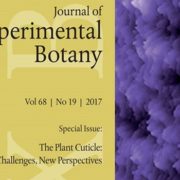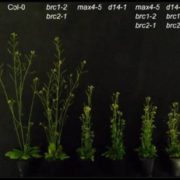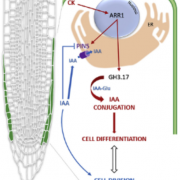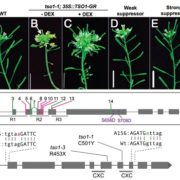Maize Meristem Matters
Tsuda et al. explore the function of BLH transcription factors in maize meristems
Plants have specialized tissues at the tips of roots and shoots called meristems. Meristem cells are what keep the plant growing; they are undifferentiated cells that continue to divide, providing new cells for growth. The progeny of the cells in the meristem can develop into many different cells types. In many ways plant meristem cells resemble stem cells in animals.
Tsuda et al. identified a mutant in maize that shows defects in all of the shoot meristems as well as the vascular system. The plant vascular system is also critical for growth, as it transports water, sugars and other metabolites throughout the plant. The genes affected in the mutant encode transcription factors, special proteins that regulate the expression of other genes; in other words, they determine when other genes are turned on or off to produce the proteins that they encode. The maize genes identified in this study encode a type of transcription factor known as BELL1-like Homeobox (BLH) transcription factors.
Homeobox genes are present in all multicellular organisms, including plants, animals, and fungi. These genes encode transcription factors that often direct basic anatomy and the formation of body parts. In plants, Knotted1-like homeobox (KNOX) genes encode transcription factors that play an important role in meristem maintenance; they are crucial in determining where and when meristem cells differentiate into other cells that will develop into the different plant organs. In some plants, such as the model plant Arabidopsis thaliana, BLH proteins are known to interact with KNOX proteins in shoot meristem maintenance. Mutants in KNOX genes have known phenotypes in maize, but maize mutants in BLH genes have not been described before.
Maize, like all grasses, is fundamentally different from Arabidopsis in that it is a monocotyledon plant, as opposed to a dicotyledon plant. One of the main differences is that monocots have scattered veins in the stem, whereas dicot stems have a ring of vascular tissue. Many important crop plants, in addition to maize, are monocots, such as rice, wheat, barley, sugarcane, and forage grasses.
The maize mutant identified by Tsuda et al. has abnormally fused veins, suggesting that the BLH genes affected in this mutant normally function to keep veins from fusing. In addition, smaller veins normally located near the surface of the stem are missing in the mutant. The flowering heads and tips of leaves at the top of the mutant plants become dehydrated and die in field conditions, presumably because of these profound differences in the vasculature.
A future challenge is to identify the target genes – those genes that are turned on or off by the BLH transcription factors – that are responsible for the fused veins and missing smaller veins in the mutant.
Tsuda, K., Abraham-Juarez, M.J., Maeno, A., Dong, Z., Aromdee, D., Meeley, R., Shiroishi, T., Nonomura, K., and Hake, S. (2017). KNOTTED1 cofactors, BLH12 and BLH14, regulate internode patterning and vein anastomosis in maize. Plant Cell doi:10.1105/tpc.16.00967.









